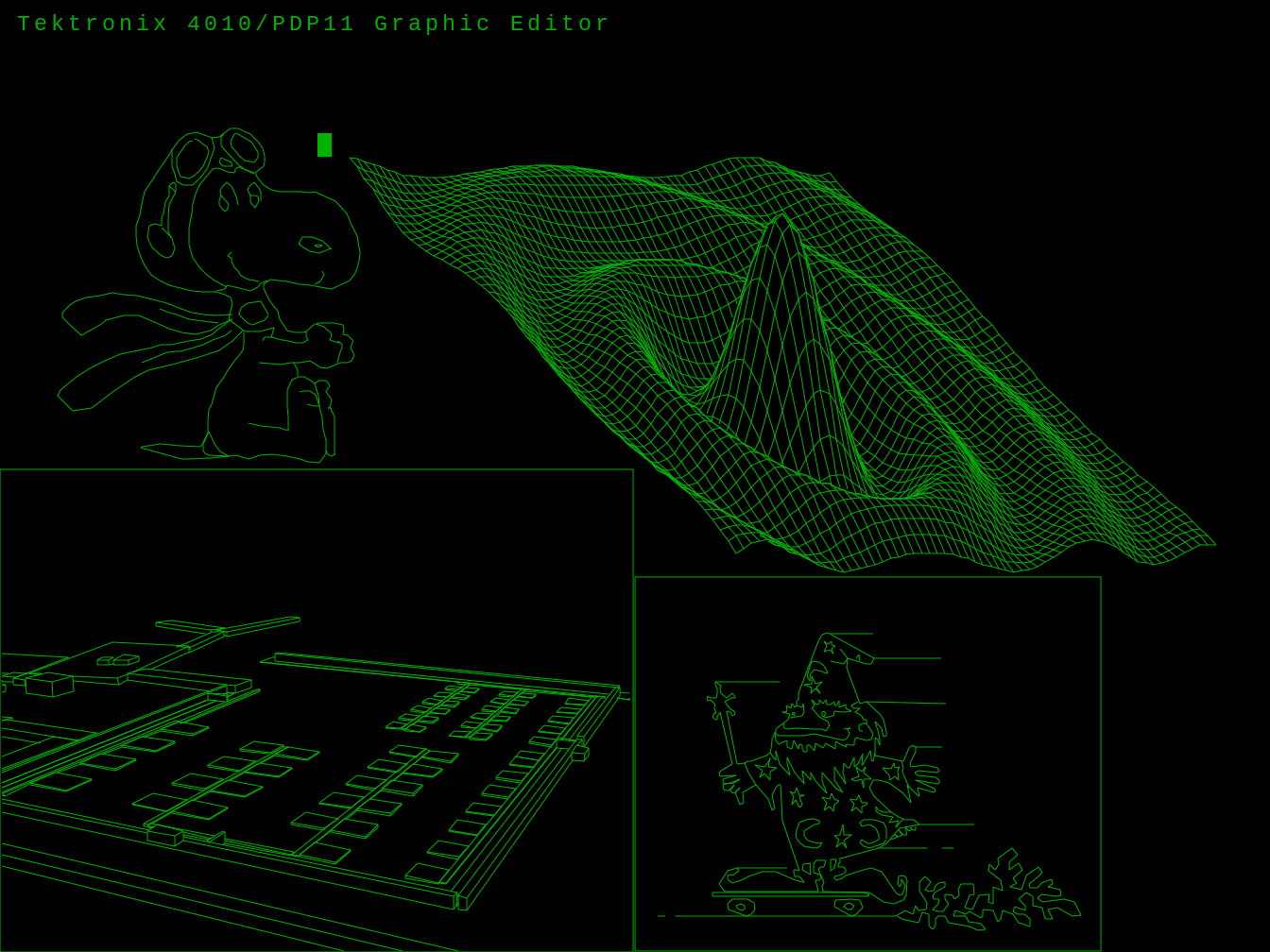Raspberry Pi Trading engineer James Hughes recently pointed out a project to us that he’d found on the Raspberry Pi forum. Using a Raspberry Pi, forum member Rene Richarz has written a Tektronix 4010, 4013, 4014, 4015, and ARDS terminal emulator. The project sounded cool, but Helen and I didn’t 100% get it, so we asked James to write an introduction for us. You can find that below, followed by the project itself. James’s intro is amazing, because, despite this heat messing with my concentration, I understand the project now! That James – what a treasure. And here he is:
Those of a certain age will remember the vector graphics display of arcade games like Battlezone and Asteroids, and the subsequent colour displays of Star Wars and Tempest. Even earlier than these games came the less sophisticated Tektronic storage tube terminals used by the pioneers of computer graphics, combined with the PDP-11s and Vax’s that were the staple of computer graphics labs of the era.
Unlike the raster displays that everyone uses now, these terminals used a steerable electron beam (the ‘write gun’) to draw lines directly on the phosphor of the monitor, which were kept illuminated by a secondary ‘flood gun’. These devices had very high resolution, up to 1024×1024 pixels, but the big problem was that you could not erase just a bit of the display — you had to erase the whole image!
Rene Richarz’s project emulates these fascinating old displays, even down to the speed of drawing: because the display needed to be charged, the electron gun could only travel at a limited speed of 1500–4000 vector inches/second!
Once memory prices started dropping, the cost of raster displays also dropped significantly, meaning these early computer graphics vector displays were consigned to the annals of history. But their memory lives on, not only in the project we see here but in many of the algorithms and techniques developed in those early years that are still used today.
PiDP-11 with tek4010 Tektronix 4014 emulator
This video shows the blinking PiDP-11 (https://obsolescence.wixsite.com/obsolescence) running the historical 2.11 BSD Unix (https://github.com/rricharz/pidp11-2.11bsd) with the Tektronix 4014 emulator tek4010 (https://github.com/rricharz/Tek4010). Late 1970s Blinkenlight action and storage tube display action.
– Werbung –
As Rene explains on the GitHub repo, his project “makes an effort to emulate the storage tube display of the Tektronix 4010, including the bright drawing spot. It can be used to log into a historical Unix system such as 2.11 BSD on the PiDP-11 or a real historical system. It can also be used to display historical plot data.”
You can see more information on the project, and join in the community discussion, on our forum, and find all the relevant code and instructions for creating your own on GitHub. And if you’d like a primer on how the bistable storage CRTs that Rene is emulating work, you could do worse than take a look at how Tektronix explained it to their customers in the July 1972 issue of Tekscope magazine.
We’ll close with this underappreciated reflection on the virtues of vector displays:
Yes raster is faster, but raster is vaster, and vector just seems more correcter.
Reproduced from old.carto.net; attributed to Dana Tomlin, 1990
Website: LINK

Schreibe einen Kommentar
Du musst angemeldet sein, um einen Kommentar abzugeben.